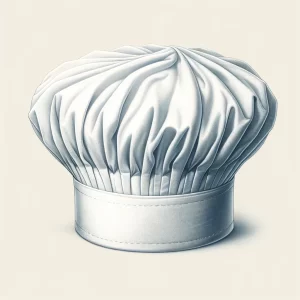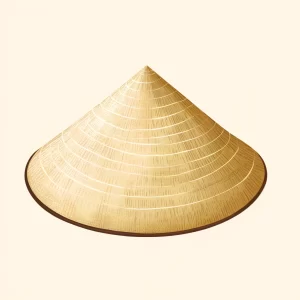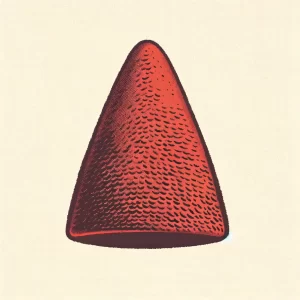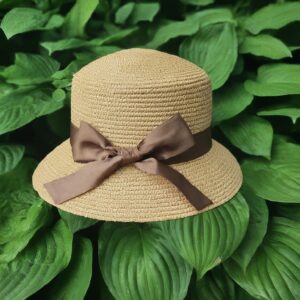The History of Hats: A Journey Through Time
Hats are one of the most popular items for custom embroidery. With classic styles such as the baseball hat featuring an iconic soft cap and stiff brim, not only do hats like these offer a timeless style, but they are a great way to promote your business. However, did you know about the long and tumultuous history of hats? Since the beginning of time, mankind has depended on hats to provide insulation and shield us from the sun. Before hats were known as a practical technique for commercial marketing they were popular all throughout the ancient world dating back to around 3000 BC. Although hats were probably popular as both a means of warmth and sun protection, there are few official archaeological records. Here is a brief history of hats, the long evolution of their style and what brought us to the modern-day hats we know and love.
The Petasos Cap – 1200 BC
One early precursor to the baseball hat is the greek “petasos”
cap. These hats were commonly worn throughout Greece and
the Byzantine Empire from 1200-150 BC. The petasos cap featured a large ringed brim and a lengthy strap. They were usually made of felt, animal hide, or straw. This hat was also associated with the Greek god Hermes. While this hat bears many similarities with the present-day baseball hat, it definitely lacks some embroidery. While we do not carry petasos caps, nor do we deal in animal hide or straw, we do offer several brimmed caps like baseball hats and bucket hats. Check out our website for some stylish petasos cap alternatives.
The Asian Conical Hat – 1000 BC
It is believed that the conical hat originated in Vietnam over 3000 years ago, although they are still used throughout Asia. Legend has it, this hat (also called the Non La) originated when a giant woman appeared from the sky during a period of monsoon rain. She was wearing a hat made of four large leaves to protect her from the rain. During her brief appearance, she taught farmers how to grow rice in flooded fields before disappearing back into the clouds. Those farmers constructed the conical hat to honour her. Ever since then, these hats have been worn all throughout Asia.
The Phygrian Cap – 300 BC
Not to be confused with a very specific part of your gall bladder, sharing the same name, the Phrygian cap grew in popularity throughout Europe beginning in 300 BC. While these caps later came to signify freedom during the American revolution, they originally appeared in vases and paintings dating back to the 4th century BC. During wartimes, these hats were often made of bronze and used as helmets. Despite originating in Greece, the Phygrian cap soon became ubiquitous. You may recognize this hat as synonymous with the Belgian comic franchise, The Smurfs, or as a precursor to Santa’s iconic headpiece. It is also often seen in Christian art worn by the three wise men. This hat style remained popular up until the American Revolution and is still worn today, albeit mainly by people in historical reenactments.
The Escoffion – 1250
 This somewhat comical-looking piece of medieval headwear was popular from 1250-1500 AD. It is difficult to pinpoint where this style originated, as it was popular with royalty throughout Europe. The escoffion was only worn by women of high status such as royals or those who lived in the royal court. At one time, this headpiece was viewed as so elite there were laws dictating who could and could not wear it, it was later deemed as a disgrace and was banned by several religious denominations for being “satanic”. And, to be honest, yes, this hat is very creepy, but calling it “satanic” may be an overstatement. This headpiece was usually made out of wool, felt, or silk that was sewn into this eye-catching double horned head covering. It often features intricate details like beading and even embroidery. That’s right, if only you were born 800 years earlier you could have your logo on an escoffion.
This somewhat comical-looking piece of medieval headwear was popular from 1250-1500 AD. It is difficult to pinpoint where this style originated, as it was popular with royalty throughout Europe. The escoffion was only worn by women of high status such as royals or those who lived in the royal court. At one time, this headpiece was viewed as so elite there were laws dictating who could and could not wear it, it was later deemed as a disgrace and was banned by several religious denominations for being “satanic”. And, to be honest, yes, this hat is very creepy, but calling it “satanic” may be an overstatement. This headpiece was usually made out of wool, felt, or silk that was sewn into this eye-catching double horned head covering. It often features intricate details like beading and even embroidery. That’s right, if only you were born 800 years earlier you could have your logo on an escoffion.
The Cloche Hat – 1920
The cloche hat was a popular hat style for women in the 1920s and 30s. Its name, derived from the French word for bell, which describes its fitted shape and square brim. This hat was so popular, it is even credited with the ride of the Eton crop, one of the most popular hairstyles for women in the 1920s. Cloches were often decorated with beadwork, applique or embroidery. Despite a brief resurgence in 2007, the cloche hat is not the one we carry in our nearly endless headwear selection.
The Baseball Cap – 1900 – Present Day
The baseball hat is one of the most popular hats in the present day. It
is derived from early brimmed hats such as the pillbox hat popularized
by Sherlock Holmes. Originally, these hats featured a leather brim and were worn exclusively by baseball players on the field in the mid-1800s. But by the early 20th century, these hats were worn on and off the field. By the 1950s, the baseball hat has evolved into the hat we know and love today, featuring an elongated brim and often a logo on the front. Nowadays, the baseball hat is the most popular hat to embroider and looks great with any design. It remains a staple in the lexicon of modern headwear.







